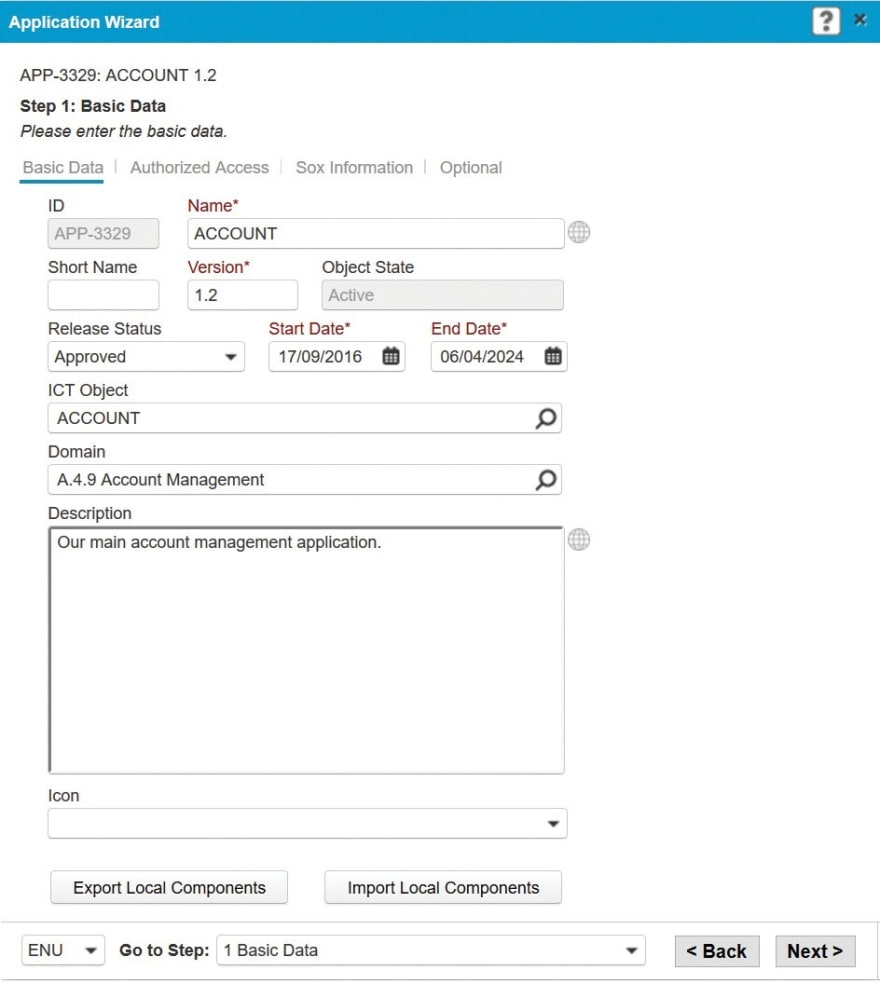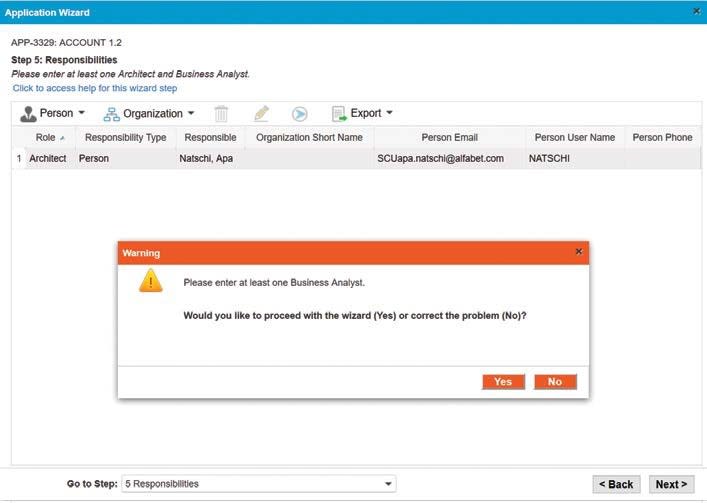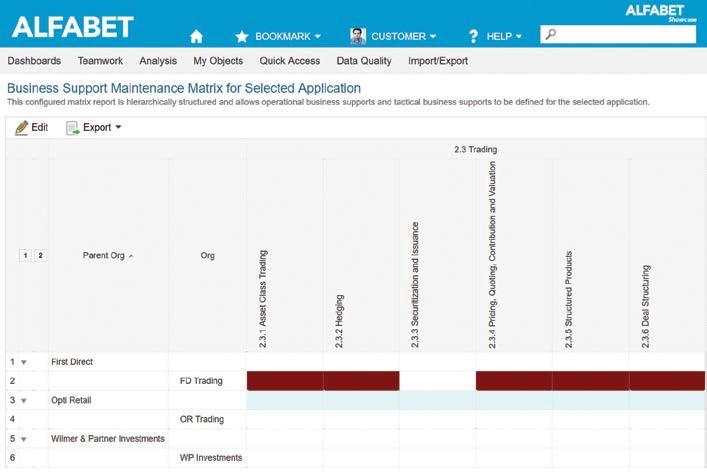Configuring for data capture
In this series we look at how to configure the Alfabet product for best fit and best practices in business and IT transformation. This episode focuses on data capture in Alfabet.
| Issue 2, 2018 |  Download PDF Download PDF |
|---|
Introduction
The key to a well-functioning IT transformation program is the completeness, consistency, accuracy and currency of the information. Stakeholders have to complete their part of the IT planning and management process, whether it’s documenting a planning element, researching problem areas, analyzing performance, creating new solution architectures, or deciding on new investment. Data capture processes should be as simple and intuitive as possible to ensure cooperation and ability from those in the know. Alfabet provides several modes of data capture, such as editors, simple data entry forms, diagrams and visualizations, tables, and data capture matrices—all highly configurable. All of these elements can be combined into wizards to provide end-to- end guidance in the data capture process.
Wizards
Wizards address one of the biggest problems in IT management: having a systematic approach to capturing information in a structured way. Uniform data formats are essential for being able to aggregate data for analysis. Standard wizards ensure consistent data capture and high data quality in the Alfabet inventory on "commodity" objects, such as demands, peripherals, components, devices and applications. In an easy-to-use, linear process with configured user prompts, users with little knowledge of the subject matter and the solution can easily perform data entry. Wizards thus optimally support large user communities and enable faster rollouts.

Fig. 1: Wizards ensure consistency in data entry.

Fig. 2: Configurable checks are used to safeguard correctness and completeness of the data input.
Further, wizards enable information requirements to be structured along stage gates. This is particularly important for demands and projects where different minimum information sets are associated with the different milestones in the planning, assessment and decision-making process. By being able to tailor the type of information captured on an object, wizards support federated IT planning and management in two ways:
- Data responsibility for an object may be shared by different contributors, e.g., the commercial elements of a contract are the responsibility of the IT sourcing manager while the usage aspects are the responsibility of one or more application or solution architects. Each contributor can have a data capture wizard tailored to the information he/she can contribute.
- Different business units may have different data requirements for the same type of object, e.g., projects. This may be further differentiated according to characteristics of the object such as projects with an estimated budget below 50k€, between 50k€ and 250k€ or above 250k€ with each requiring different data.
Ad hoc surveys
Ad hoc surveys driven by regulatory or senior management requests occasionally require information that is not captured as standard in the Alfabet repository. These surveys need to be executed quickly and reliably—something that conventional manual methods can’t deliver. Alfabet’s survey facility enables the quick implementation of data gathering campaigns targeting the Alfabet stakeholder community. The facility provides a simple survey procedure with a high level of automation, high data quality and reportable results on specific aspects, such as a domain or organization as well as the entire survey project. Data capture is governed using a proven process for efficiency and integrity.
Surveys can be used, for example, to:
- Assess user satisfaction on architecture elements in order to support portfolio decisions
- Take inventory of technology usage in order to be able to predict compatibility issues when introducing new technologies
- Respond quickly to compliance auditor questions
- Collect of additional data aspects on objects when progressing from a lower to a higher level of maturity
Data capture matrix reports
Data capture matrix reports are used to capture and maintain relationship information between objects in the inventory. Objects that are permissible for relationship building are displayed on
the matrix axes and the intersections of those objects visualize their relationship. This function supports mass information management as typically found in application and information portfolio management. Another usage for the data capture matrix is for populating an organization’s master plan. Organizations use the master plan as a core planning facility and depend on an understanding of object relationships for reliable planning. Large IT organizations are often challenged with the efficient management of massive amounts of “business supports” (the expression in a master plan of the support IT provides for a particular business process or capability, organization or market product). It is not uncommon to find up to 100,000 or more business supports in a globally operating corporation. This makes creation and management of business support an enterprise- level task, not just an exercise to be performed by a small team of heroes. The data capture matrix report reduces the time it takes to capture and manage business supports with features such as bulk copy and paste and rules that take the work out of identifying permissible business supports.

Fig. 3: This matric is used to define which applications organizational units are using for which business processes. It is the basis of the master plan map for the domain "Trading".
Alfabet Data Integration Framework (ADIF)
Alfabet Data Integration Framework (ADIF) is a configurable mass update facility for high-performance import, export, and manipulation of large data volumes. ADIF is ideal for capturing data sourced in adjacent IT management tools. High performance is achieved by mapping, formatting and writing data in a single database transaction. Configuration in ADIF is done using SQL,T-SQL or PL/SQL and provides users with a simple and well- established facility for defining the data integration.
ADIF provides automatic structure recognition for CSV, XLS, JSON™ and XML files whereby one import package can contain several data sources of different types. It provides visual design of import packages and a visual debugger to validate the correctness of the implemented business logic in controlled step-by-step execution. Import jobs are started as a synchronous or asynchronous process and can be embedded in established enterprise integration solutions.
Using ADIF for data capture offers the following advantages:
- Fast data upload/modification - major parts of ADIF scripts are executed directly on the database
- Transactional - all changes are executed within one transaction with full roll-back in case of an error
- Various data sources - ADIF can process data from various sources at once
- Various data formats - Microsoft® Excel®, CSV, JSON, XML
- Direct reading of data from a database - SQL and Oracle® databases and LDAP are supported
- Development environment provided - ADIF contains a full development environment for scripts
As the integrity and consistency of data are of utmost importance in Alfabet, quality checks are performed by Alfabet during imports to ensure that inconsistencies and contradictions of data from the originating tool are not taken over. It is often the case that the originating data source permits data discrepancies due to lack of adherence to established modeling conventions. Alfabet compensates for this by enforcing correct input on its own. For example, if a class has start and end date attributes, Alfabet requires that the end date is later than the start date, which may not be the case for the tool from which such data is imported.
Stay tuned for our next episode on configuring workflows in Alfabet.





Top comments (0)